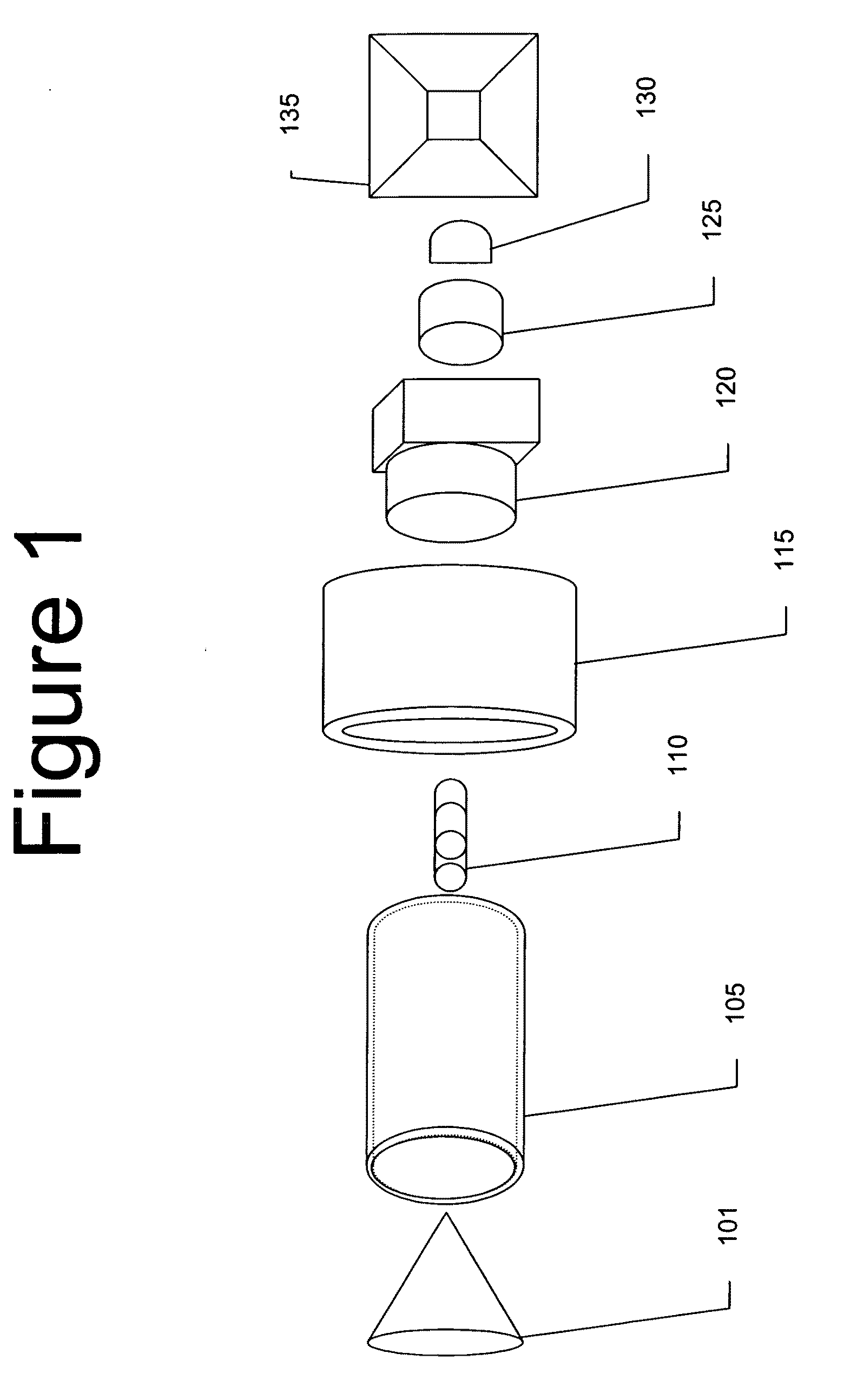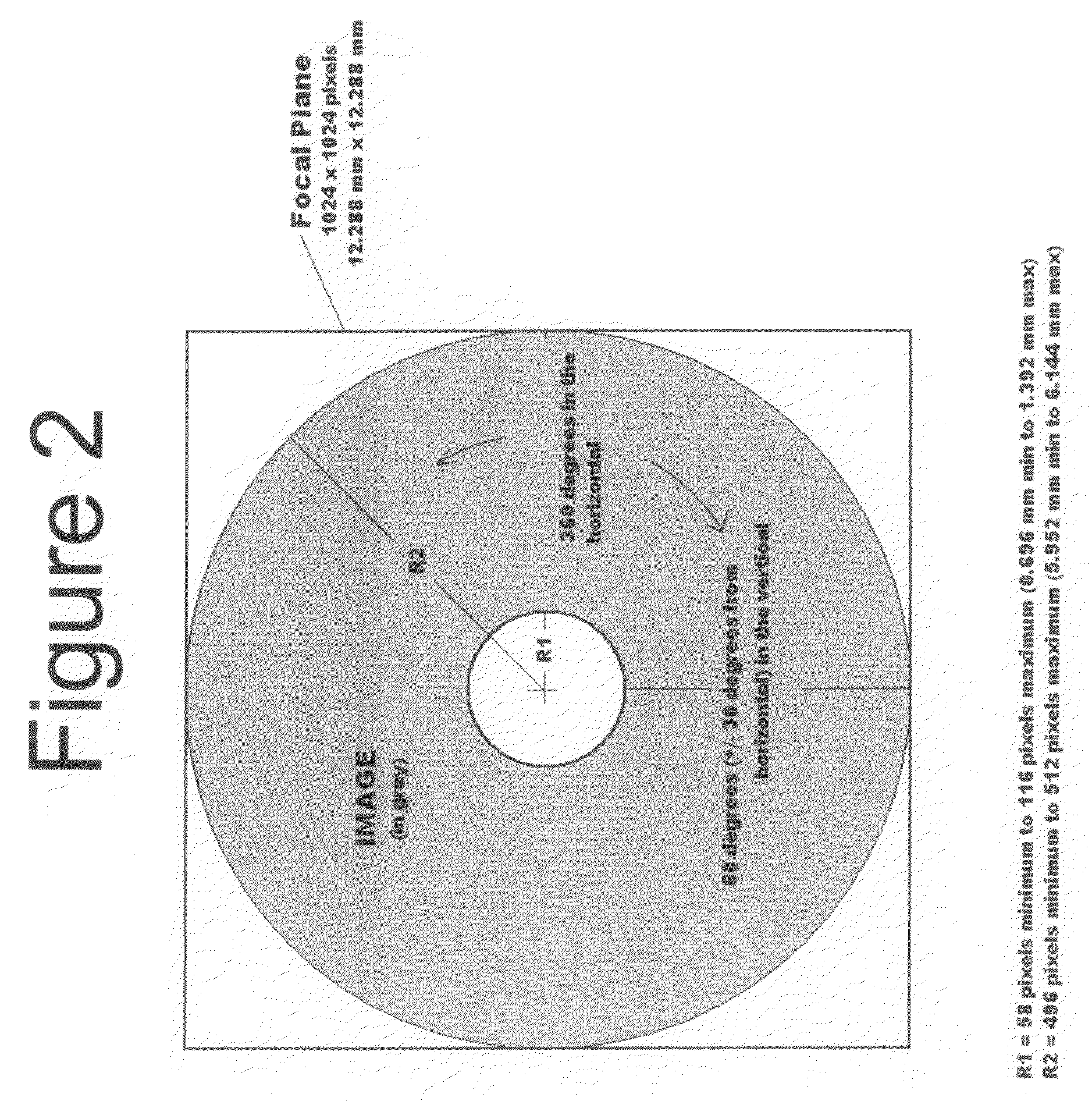Low cost threat detection sensor
a low-cost, threat-detecting technology, applied in the direction of optical radiation measurement, distance measurement, instruments, etc., can solve the problems of limiting the field limiting the and limiting the range of vision and response time, so as to achieve the effect of reducing the effectiveness or sensitivity of the detector
- Summary
- Abstract
- Description
- Claims
- Application Information
AI Technical Summary
Benefits of technology
Problems solved by technology
Method used
Image
Examples
Embodiment Construction
[0025]The following detailed description of the invention refers to the accompanying drawings. The same reference numbers in different drawings identify the same or similar elements. Also, the following detailed description does not limit the invention. Instead, the scope of the invention is defined by the appended claims and equivalents thereof.
[0026]Current sensor systems available for threat detection are typically in the form of mechanically or electrically scanned radar or cryogenically cooled detectors. The present invention has the advantages of requiring no mechanical or electrical scanning, or any form of cryogenic cooling. This reduces both weight and component cost as the need for mechanical actuators, complex electronics, and cooling / refrigeration systems is reduced.
[0027]Although a forward-looking detection device can be rotated for 360 degree imaging or utilize multiple sensors to cover 360 degrees these configurations introduce a host of complexities readily avoided b...
PUM
 Login to View More
Login to View More Abstract
Description
Claims
Application Information
 Login to View More
Login to View More - R&D
- Intellectual Property
- Life Sciences
- Materials
- Tech Scout
- Unparalleled Data Quality
- Higher Quality Content
- 60% Fewer Hallucinations
Browse by: Latest US Patents, China's latest patents, Technical Efficacy Thesaurus, Application Domain, Technology Topic, Popular Technical Reports.
© 2025 PatSnap. All rights reserved.Legal|Privacy policy|Modern Slavery Act Transparency Statement|Sitemap|About US| Contact US: help@patsnap.com



